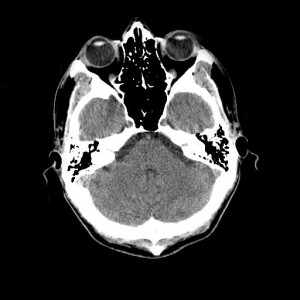
"Buffalo Bill's Wild West" show poster (cliff1066-TM/Flickr)
The business of smartphone health apps is growing exponentially. Here at Children’s, I coordinate and supervise a team of software developers who are helping our clinicians build apps. While I love the innovation and excitement health apps bring, the regulation is just starting to catch up with the industry. That makes the future uncertain.
The Food and Drug Administration’s proposed mobile health app guidelines, published in July, are a step in the right direction. But many concerns remain. In taming the Wild West, will the FDA go too far into overregulation? Will the new rules stifle the growing industry of app development by small startups or internal hospital developers? Can we continue innovating in the current state?
Consumers feel the uncertainty too. When considering the use of an app, how do you know whether it’s providing correct information? Full story »
Here once again is Vector’s take on some exciting trends we’ve been watching in the pediatric health arena and what we expect to see more of this year. If you’ve got others to propose, scroll to the bottom and let us know!

Genomics is starting to provide clinically actionable information (Michael Knowles/Flickr)
Whole-genome sequencing enters the clinic
In 2000, with our genome deciphered, the Human Genome Project promised to transform medicine, predicting and preventing all that ails us. The project spawned next-generation technologies, accelerated the development of bioinformatics and shaped new perspectives on research. But if, say, a stroke patient was asked the question, “Is your life any better than 10 years ago thanks to advent of genomics?” the answer would have to be “no.” Hence the New York Times’s assertion in 2010 that the project yielded few new cures.
Now that paradigm seems to be shifting. Whole-genome sequencing has begun moving into the clinic, sleuthing out problems, offering hope for a medicine that’s more effective and more personal. 2011 saw genomic information provide biochemical insights timely and actionable enough to improve the treatment of individuals with cancer and dystonia, and, in a case at Children’s, failure to thrive and severe kidney calcification. Full story »

President Obama signs the Patient Protection and Affordable Care Act, March 23, 2010 (Pete Souza/Wikimedia Commons)
National healthcare reform, including President Obama’s Affordable Care Act of 2010, is being driven by widespread dissatisfaction with the high cost and limited accessibility of care. Although we’ve yet to feel the full impact of these national reforms, the reform experience in Massachusetts indicates that mandated universal coverage, by itself, has failed to drive down costs.
So, in Massachusetts, we’re now in the next phase of healthcare reform, focusing on how to control and cut costs while still providing nearly universal access to high quality services and care. The need to bring down costs is stimulating healthcare innovation in three major areas – perhaps offering some lessons for the nation as it moves toward universal care. Full story »

Context can create bias: Squares A and B are the same shade of gray (created by Edward Adelson, professor of vision science, MIT)
Before you read this post, look at squares A and B in the image to the left. Which is darker?
Next, answer the following questions:
- A bat and a ball cost $1.10 in total. The bat costs $1.00 more than the ball. How much does the ball cost?
- If it takes 5 machines 5 minutes to make 5 widgets, how long would it take 100 machines to make 100 widgets?
- In a lake, there is a patch of lily pads. Every day, the patch doubles in size. If it takes 48 days for the patch to cover the entire lake, how long would it take for the patch to cover half of the lake?
Did your mind leap to these quick answers — 10 cents, 100 minutes, 24 days?
Such errors on this Cognitive Reflection Test are quite common, and not so different from the lapses in thinking that underlie medical errors. Full story »

(Andreas Gohr/Flickr)
When patients are sick enough to require hospitalization, medical decisions often involve nontrivial tradeoffs between risks and benefits. They require discussions with patients and families from a variety of cultures and backgrounds. And sometimes these discussions break down.
Patient-clinician communication is increasingly recognized as an integral part of clinician competency. Indeed, family-centered rounding, increasingly practiced at Children’s Hospital Boston, is a critical step in this direction. Fully adopting this practice surely will enhance communication quality.
Yet, I suspect we’re still missing cues from patients and families, signs that our alliances with them are not sound. We can’t be maximally perceptive all of the time. It is busy, we are tired, we want to teach, we want to be efficient, and we want to get to the noon conference to learn to be better doctors. Full story »

(image: Sandyhombre/Flickr)
In the past few decades, what used to be considered medical miracles have become expected and everyday. More children are surviving prematurity, even extreme prematurity. Congenital heart defects are routinely repaired, leukemia has largely become curable, and conditions like sickle cell disease and cystic fibrosis have become manageable chronic conditions with a greatly increased life expectancy.
That’s created a new problem: young adults entering an adult healthcare system that isn’t ready for them. Many have cognitive disabilities or emerging coexisting conditions like obesity, asthma and type 2 diabetes. Many are used to having their care managed by their parents.
A national study of patients aged 19 to 23 with special health care needs – the first to draw on interviews of young adults themselves – finds many of them ill-prepared to assume lifelong responsibility for their health. Full story »

(Photo: The Advocacy Project/Flickr)
Though the diagnosis is overwhelming for patients and families to receive, many childhood cancers have become “curable diseases.” At major U.S. centers like mine, the Dana Farber/Children’s Hospital Cancer Center, research efforts now largely focus on survivorship, refining risk stratification, minimizing treatment toxicity and developing more effective salvage therapies upon relapse.
But the situation globally is quite different. The technologic and resource gap between our centers and centers in the developing world is widening. Only a fraction of the children diagnosed with cancer around the world have access to therapy, either curative or palliative.
Treatment abandonment is another significant barrier to cancer care in the developing world. The reasons aren’t only economic, but are complex and multifactorial, including limited education, fatalism surrounding a cancer diagnosis, magical thinking, mistrust of the health care system, Full story »

When does a trauma patient need a CT scan? Clinical rules could help doctors decide, and in the process help reduce a child's lifetime radiation exposure. (Image: Andrew Ciscel/Flickr)
The use of computed tomography (CT) scans has dramatically changed the practice of medicine in the past two decades. Patients with abdominal pain are no longer routinely admitted for serial abdominal exams to evaluate for appendicitis, because now we can just get the CT. Children with head trauma may need less hospital observation time in the emergency department (ED), because we can just get the CT.
But “just getting the CT” comes with costs, not just medical healthcare dollars spent but the costs associated with lethal malignancies in the future caused by the radiation used in the course of CTs. Full story »

Photo: Angela Catlin/Wikimedia Commons
The infamous orphanages of Romania have become laboratories for studying the effects of profound child neglect. We already know from this sad situation that depriving children of normal emotional and social interaction leads to lower IQ scores, high rates of mental illness and stunted physical growth.
Now there’s evidence that early adversity goes to the core of children’s DNA – prematurely shortening their chromosome tips, known as telomeres, and hastening how quickly their cells “age.”
“Orphanages” is a misnomer, because these state-run institutions mostly house children who were abandoned by their families. They are a legacy of the 1960s, when Romania’s Communist dictator Nicolae Ceausescu taxed all families with fewer than five children, and then built child placement centers to house the children whose families couldn’t support them. Full story »
This two-part series, a response to the recent appeals court decision lifting an injunction on federal funding of human embryonic stem cell research, was co-authored by M. William Lensch, George Q. Daley, and Leonard Zon of the Stem Cell Research Program at Children’s Hospital Boston. (Read Part 1.)
While there is reason for optimism, the April 29 appeals court ruling lifting the injunction on federal funding for human embryonic stem cell (hESC) research will not be the last chapter in the story of such research in the United States. And there are moments in this story that hold cause for greater alarm. Full story »
















